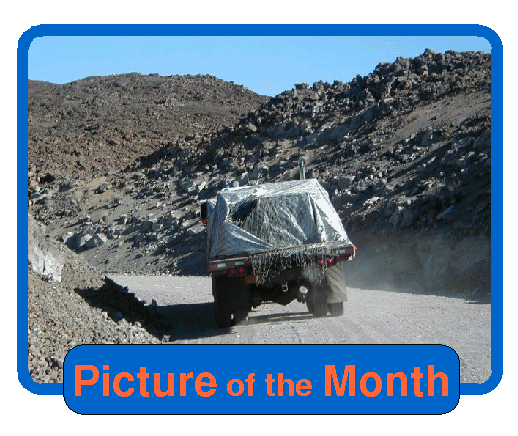

Canadian astronomers go over to the "dark" side
FOR RELEASE: 9:00 a.m. PDT, May 12, 2002Canadian and French astronomers are set to embark together on a massive exploration of the universe using a unique new instrument. The Canada-France-Hawaii Telescope Legacy Survey (CFHTLS) will be the largest observing project in Canada over the next five years. Its goals are to determine the properties of the dark energy that is driving the acceleration of the universe, to precisely the measure the amount of dark matter, and to study the dark chunks of rock and ice leftover from the formation of the solar system.
The CFHTLS will run for approximately 500 nights over the next five years at the 3.6 metre (142 inch) Canada France Hawaii Telescope (CFHT) on Mauna Kea, Hawaii. This is the first time a large telescope has been so dedicated to a single project. The CFHTLS will take over 2000 pictures with the newly built MegaCam, the world's largest astronomical camera. MegaCam is capable of taking a one square degree picture of the sky at a time (for comparison, the Moon takes up only 1/4 of a square degree).
The CFHTLS three related observational components. The first of these is the UltraDeep Survey, which will help astronomers choose among the possible candidates for "dark energy". Dark energy is a mysterious repulsive force that was proposed to explain the apparent acceleration of the universe. This acceleration was discovered in 1998 by studying images of approximately 80 supernovae. The UltraDeep Survey will find about 2000 new supernovae, some as distant as 10 billion light years (a redshift of z = 1.4). This will be the largest sample of supernovae from any ground-based telescope.
The second component, known as the Deep Survey, will allow astronomers to create maps of "dark matter". Dark matter is an unknown substance that makes up over 90% of the gravitating mass in the universe. Dark matter cannot be seen directly, but its gravitational field will bend light that travels through it, in a process known as "gravitational lensing". The Deep Survey pictures will contain approximately 2 000 000 galaxies. The galaxies will be analyzed to determine how their light has been bent by the dark matter. The dark matter maps created from the Deep Survey data will be the largest ever made.
The third component, the UltraWide Survey, will find 1000 or more Kuiper Belt Objects (KBOs). KBOs are chunks of rock and ice that orbit our sun out beyond Neptune, the leftovers from the disk that formed our solar system. The UltraWide Survey will find the biggest of the KBOs, some of which may be even larger than the "planet" Pluto. Studying these objects will help astronomers understand how our planets formed, which in turn will help them understand the formation of planets orbiting other stars. The UltraWide Survey will be the first comprehensive survey of the KBOs.
The CFHTLS is a joint project of the Canadian and French astronomical communities. Any of the hundreds of astronomers in Canada and France are able to register to become part of the project. All project members will have equal and simultaneous access to the data for any scientific purpose they choose. This way of managing telescope time and data handling is unique for such a large project.
The CFHT is operated by the National Research Council of Canada, le Centre National de Recherche Scientifique in France, and the University of Hawaii. The CFHTLS is supported by the Centre National de la Recherche Scientifique and the Institut National des Sciences de l'Univers in France, the Canada France Hawaii Telescope, and the National Research Council and the Natural Sciences and Engineering Research Council in Canada.
For more information, please contact:
-
Prof. Ray Carlberg (416-978-2198,
carlberg@astro.utoronto.ca)
Department of Astronomy and Astrophysics, University of Toronto
Dr. David Schade (250-363-6904, David.Schade@nrc.ca)
Group Leader, Canadian Astronomy Data Centre, Herzberg
Institute of Astrophysics, National Research Council
Margaret Milne (250-721-7747, mlmilne@uvic.ca)
CFHTLS Canadian Media Contact
This site was last updated on September 28th, 2002.
Comments, suggestions or questions? mlmilne@uvic.ca